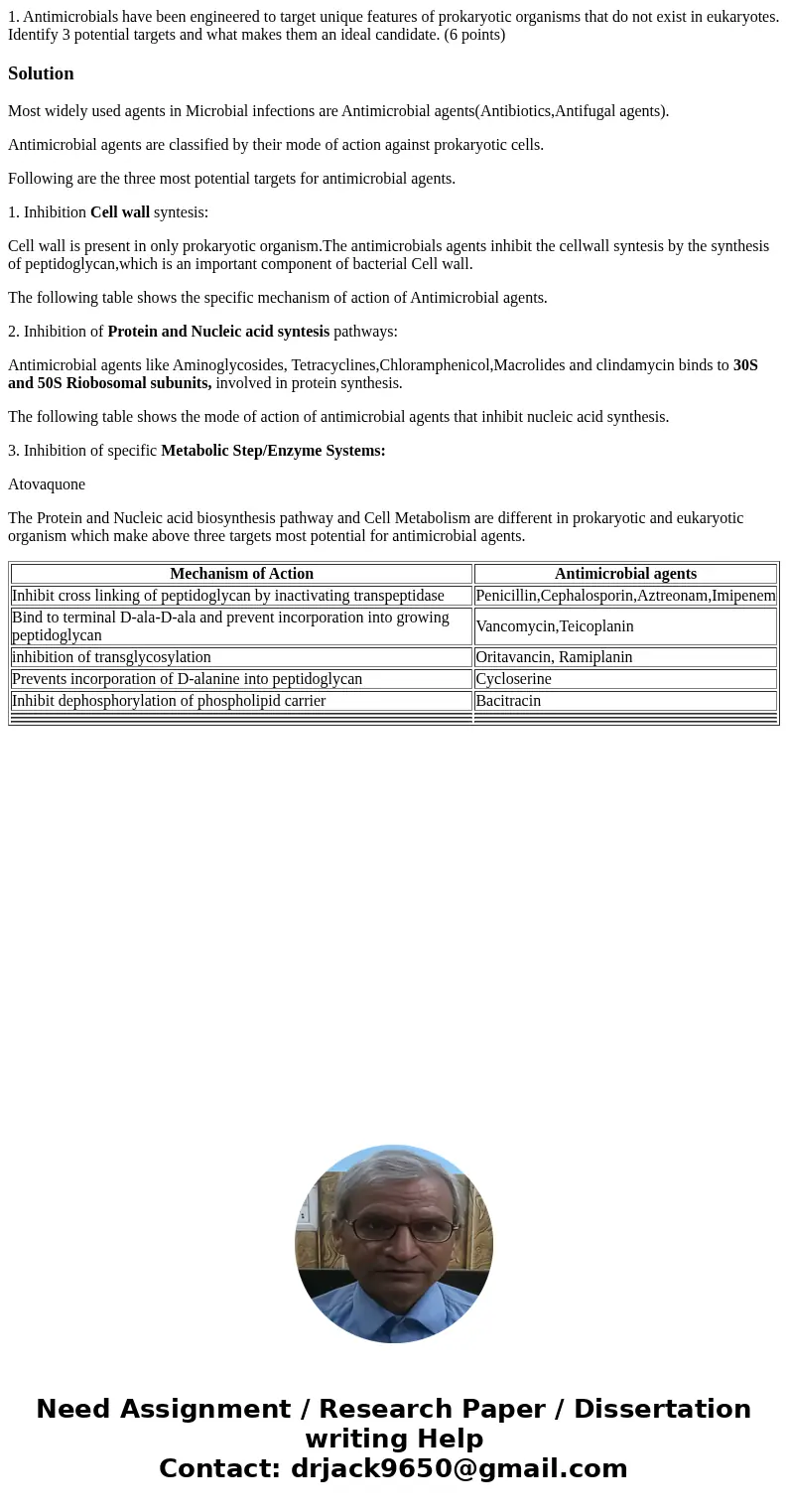1 Antimicrobials have been engineered to target unique featu
1. Antimicrobials have been engineered to target unique features of prokaryotic organisms that do not exist in eukaryotes. Identify 3 potential targets and what makes them an ideal candidate. (6 points)
Solution
Most widely used agents in Microbial infections are Antimicrobial agents(Antibiotics,Antifugal agents).
Antimicrobial agents are classified by their mode of action against prokaryotic cells.
Following are the three most potential targets for antimicrobial agents.
1. Inhibition Cell wall syntesis:
Cell wall is present in only prokaryotic organism.The antimicrobials agents inhibit the cellwall syntesis by the synthesis of peptidoglycan,which is an important component of bacterial Cell wall.
The following table shows the specific mechanism of action of Antimicrobial agents.
2. Inhibition of Protein and Nucleic acid syntesis pathways:
Antimicrobial agents like Aminoglycosides, Tetracyclines,Chloramphenicol,Macrolides and clindamycin binds to 30S and 50S Riobosomal subunits, involved in protein synthesis.
The following table shows the mode of action of antimicrobial agents that inhibit nucleic acid synthesis.
3. Inhibition of specific Metabolic Step/Enzyme Systems:
Atovaquone
The Protein and Nucleic acid biosynthesis pathway and Cell Metabolism are different in prokaryotic and eukaryotic organism which make above three targets most potential for antimicrobial agents.
| Mechanism of Action | Antimicrobial agents |
|---|---|
| Inhibit cross linking of peptidoglycan by inactivating transpeptidase | Penicillin,Cephalosporin,Aztreonam,Imipenem |
| Bind to terminal D-ala-D-ala and prevent incorporation into growing peptidoglycan | Vancomycin,Teicoplanin |
| inhibition of transglycosylation | Oritavancin, Ramiplanin |
| Prevents incorporation of D-alanine into peptidoglycan | Cycloserine |
| Inhibit dephosphorylation of phospholipid carrier | Bacitracin |

 Homework Sourse
Homework Sourse